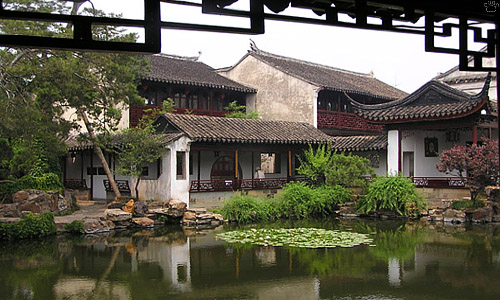
Garden of the Master of the Nets, c. 1100, Suzhou, Jiangsu.
Part 13. Water Cities
Parts of Eastern China are so flat that there is more water than land there. Thousands of lakes and rivers are connected by countless canals. The main waterways are the mighty Yangze and 1,794-km long Great Canal, built mostly in AD 300-400. People living in this labyrinth have learned to built cities with canals instead of streets. The first of these "water cities" appeared in China many centuries before Venice was founded.
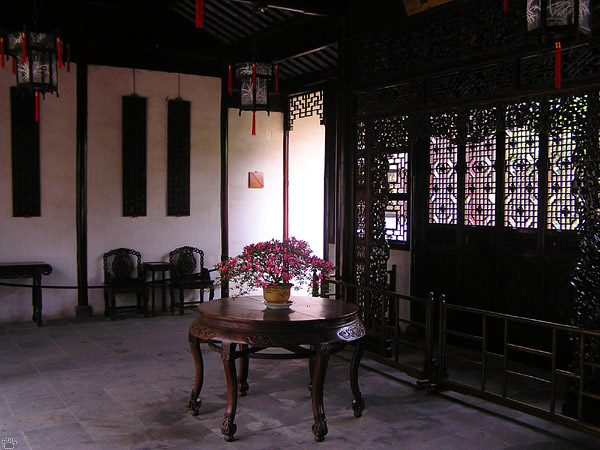
Pure Fragrance Pavilion, Garden of the Master of the Nets, Suzhou. |
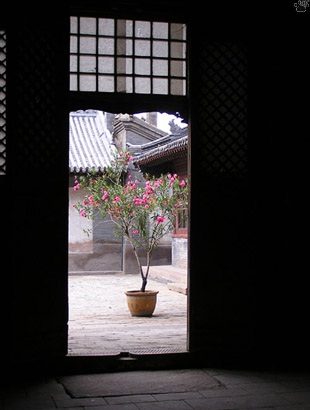
Garden of the Humble Administrator, c. 1200, Suzhou. |
Very few of these "water cities" still remain. Most, like Hanzhou and Suzhou, have been drained and paved, with only a few canals and lakes left. Suzhou still has a lot of beautiful classical gardens. |
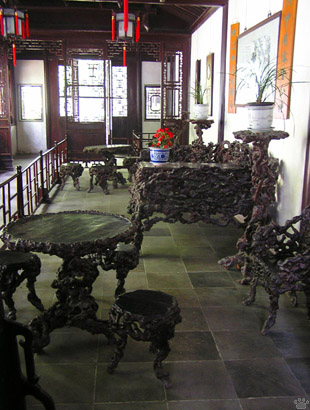
Green Wave Pavilion, Garden of the Humble Administrator, Suzhou. |
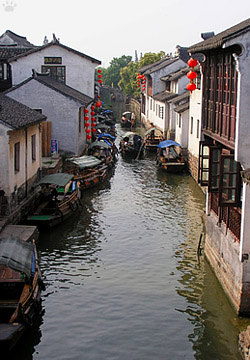
City street, Zhouzhuang, Jiangsu. |
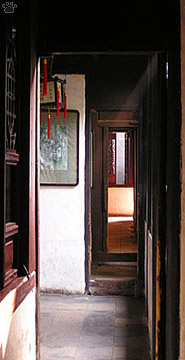
Inside a Ming Dynasty house, Zhouzhuang. |
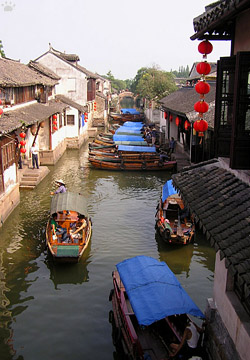
City street, Zhouzhuang. |
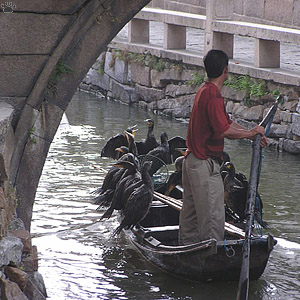
Fishing with cormorants, Zhouzhuang. |
The best preserved "water city" is Zhouzhuang. Most buildings in the old part of the town are 150-350 years old; bridges date back to AD 1270-1620. It's a bit touristy, but very beautiful.
|

Bridge, Zhouzhuang. |
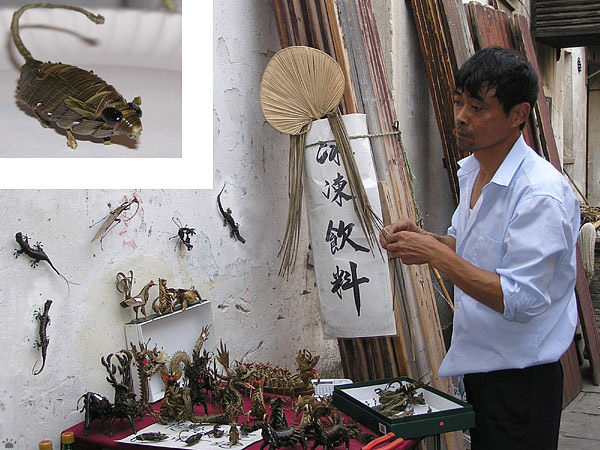
Artist and his work, Zhouzhuang. |

View of Shanghai from the TV tower. |
Nine hundred years ago, Shanghai was a large fishing village or a small "water town" near the coast. There are still many rivers, channels and lakes there... but everything else has changed a little bit. |

View of The Bund from the TV tower, Shanghai. |
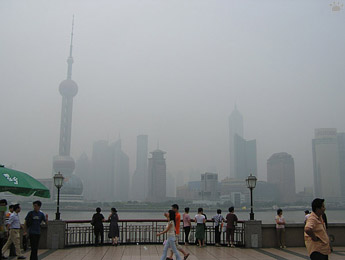 |
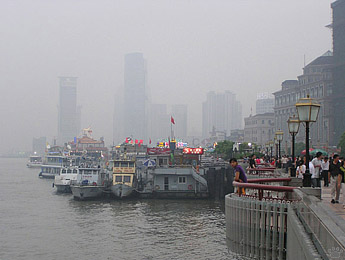 |
| The Bund, Shanghai. |
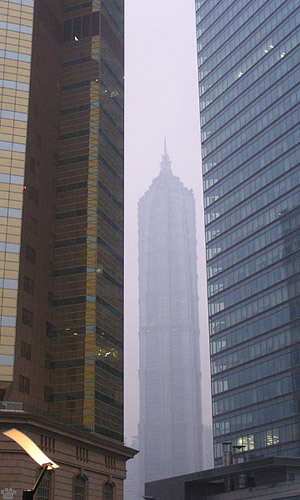
Jinmao Building (421 m), Shanghai's tallest skyscraper. |
I am not a big fan of modern architecture in general, and of skyscrapers in particular. Before I visited Shanghai, Petronas Towers in Kuala Lumpur was the only one I kind of liked. But Shanghai is the only city where a lot of them really fit together and create a beautiful Sci-Fi world unlike any other. |
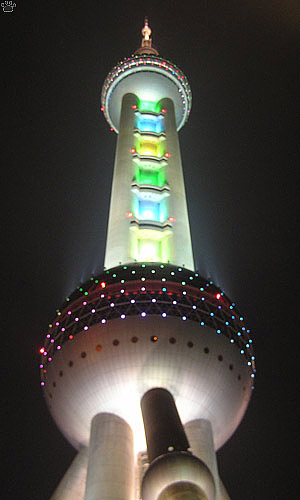
Oriental Pearl (Shanghai TV tower), 500 m. |
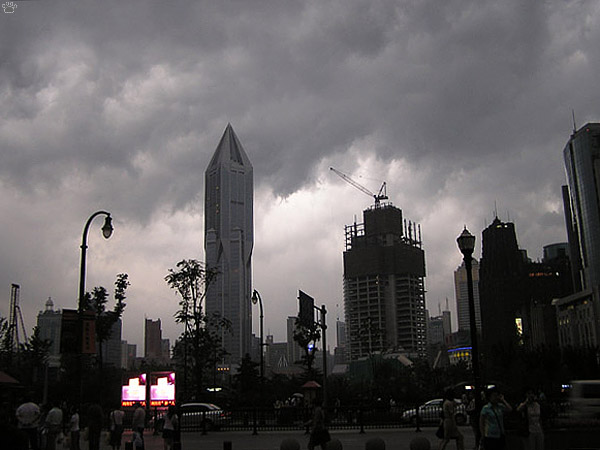
Summer thunderstorm over Shanghai. |

Buddhist temple, Shanghai. |
Shanghai looks its most futuristic during violent summer rainstorms, but it's never too boring. |
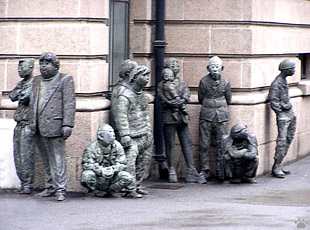
"Bus Stop". Streetside sculpture, Shanghai. |
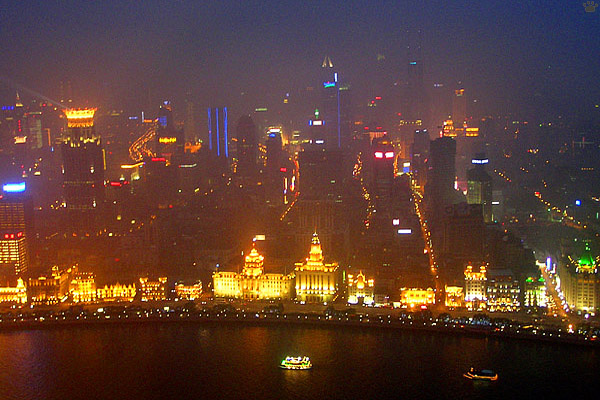
View of The Bund from the TV tower, Shanghai. |
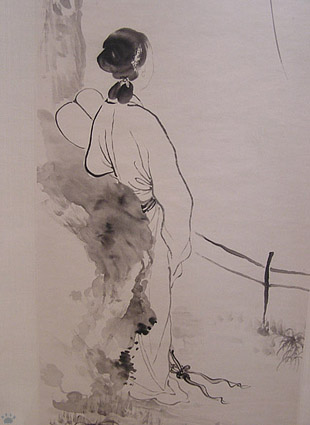
Lady with Fan (fragment), by Fei Danxu (1801-1850), Shanghai Museum. |
If you only have time to see two places in the city, try to get up the TV tower and spend a few hours in Shanghai Museum. This huge 5-store building houses one of the largest collections of Chinese art in the world. |
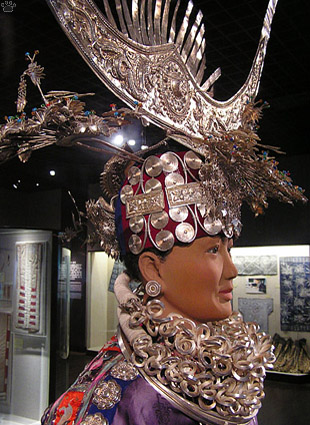
Traditional heardress of Miao people, Shanghai Museum. |
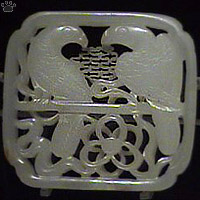 |
 |
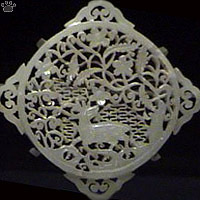 |
| Jade carvings, Ming Dynasty (1368-1644), Shanghai Museum. |
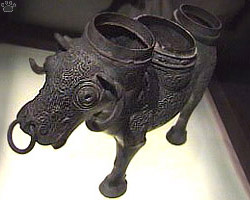
Bronze vessel, Han Dynasty (c. 100 BC), Shanghai Museum. |
One extra reason to spend a lot of time in the Museum is that there's not much else to do in Shanghai. The city doesn't have any historical monuments, lifestyle is too westernized to be interesting, and the only decent entertainment is provided by girls desperately looking for English practice. |

Bronze vessel, Han Dynasty (c. 100 BC), Shanghai Museum. |
 |
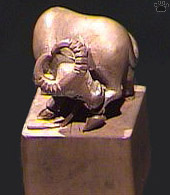 |
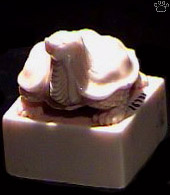 |
 |
| Seals, Song Dynasty (960-1260), Shanghai Museum. |
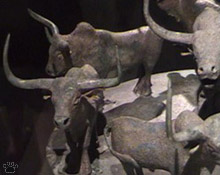
.

| Shanghai is a very comfortable, efficient, well-organized city with a good subway system, although navigation in the suburbs is not always easy. | 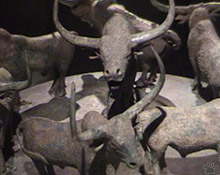
.
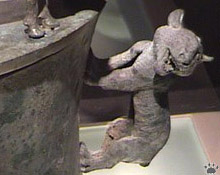 |
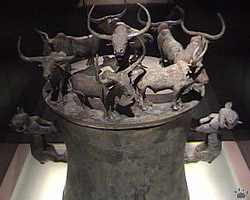 |
| Bronze vessel, Han Dynasty (c. 100 BC), Shanghai Museum. |
| The only problem is, you have to go two provinces away to get out of the city - everything is built over for at least 200 miles around. |
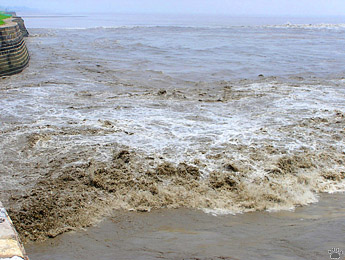 |
 |
| Tidal wave on Fuching Jiang river at Yanguan, Zhejiang. |
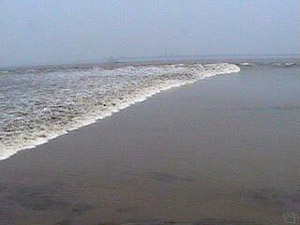
Tidal wave at Yanguan, Zhejiang. |
If you get bored in Shanghai, go see the famous bore (tidal wave) on nearby Fuchung River. It can be up to 10 m high at high tide. |
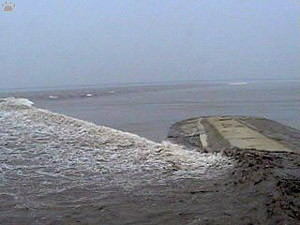
Tidal wave at Yanguan, Zhejiang. |
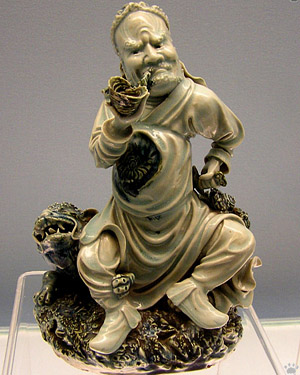
China figurine, Wanli Reign (1573-1620), Shanghai Museum.
Part 14: Other Places
Back to Part 12
Home
|